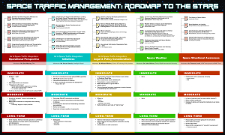Extreme Rainfall Frequencies over the Kennedy Space Center Complex
Location
Jim Henderson Welcome Center, Embry-Riddle Aeronautical University - Daytona Beach
Start Date
6-11-2014 9:30 AM
Abstract
A study of extreme rainfall frequencies over the NASA Kennedy Space Center complex was accomplished using a high-density rainfall dataset from the Tropical Rainfall Measurement Mission’s observational network archive. Data from the network were gridded and analyzed to produce rainfall accumulation estimates for various return periods over the complex ranging from 1 to 100 years. Results of the analysis show that the rainfall accumulations for the 100-year return period are typically around 315 mm and 433 mm for 24-hour and 72-hour durations, respectively. These 100-year event estimates are consistent with those calculated from a longer-period archive at Titusville. Because the majority of extreme events took place during the wet season (defined here as the months of May through October), it appears that the extreme-event analysis is more reliable when using an annual or wet-season cycle as the basis for calculation. Despite these findings, there are still large uncertainties associated with the longest return-period estimates (e.g., 100 years), and large spatial variations in the extreme-value estimates over the 20 x 30-km analysis domain. The implications of extreme-rainfall frequency analysis are explored from both the planning perspective as well as the impact-analysis perspective. The latter is explored by examining individual events such as Tropical Storm Fay, which produced 24-hour and 72-hour rainfall accumulations of 371 mm and 626 mm, respectively, across the complex in August 2008.
Area of Interest
Weather Impacts
Extreme Rainfall Frequencies over the Kennedy Space Center Complex
Jim Henderson Welcome Center, Embry-Riddle Aeronautical University - Daytona Beach
A study of extreme rainfall frequencies over the NASA Kennedy Space Center complex was accomplished using a high-density rainfall dataset from the Tropical Rainfall Measurement Mission’s observational network archive. Data from the network were gridded and analyzed to produce rainfall accumulation estimates for various return periods over the complex ranging from 1 to 100 years. Results of the analysis show that the rainfall accumulations for the 100-year return period are typically around 315 mm and 433 mm for 24-hour and 72-hour durations, respectively. These 100-year event estimates are consistent with those calculated from a longer-period archive at Titusville. Because the majority of extreme events took place during the wet season (defined here as the months of May through October), it appears that the extreme-event analysis is more reliable when using an annual or wet-season cycle as the basis for calculation. Despite these findings, there are still large uncertainties associated with the longest return-period estimates (e.g., 100 years), and large spatial variations in the extreme-value estimates over the 20 x 30-km analysis domain. The implications of extreme-rainfall frequency analysis are explored from both the planning perspective as well as the impact-analysis perspective. The latter is explored by examining individual events such as Tropical Storm Fay, which produced 24-hour and 72-hour rainfall accumulations of 371 mm and 626 mm, respectively, across the complex in August 2008.

